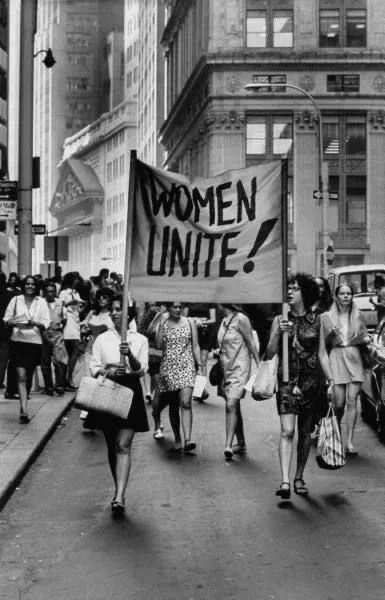“What Do We Do Now?”: A Study On Women’s Historical Impact
By Carolina Dionísio
Reese Whiterspoon’s most hated question is “What do we do now?” This is because, if you pay close attention, you’ll notice that by the third act of every movie, during a crisis or when all hope is presumably lost, the women will frailly turn to the men and ask: “So, what do we do now?”
"Go back and watch any movie, you will see this line over and over,” said Whiterspoon at Monday's Glamour's 25th annual Women of the Year Awards.
We can witness this phenomenon in Gone with the Wind (1939), Eternal Sunshine of the Spotless Mind (2004), Last Night (2010), Jurassic World: Dominion (2022), and more. Even in animations like Toy Story 3 (2010) and Frozen (2013).
I always thought this is so funny when compared to our actual History — because women have absolutely known what to do.
Image Sourced through Pinterest
In the 1840s, Ada Lovelace wrote the first computer algorithm for Charles Babbage’s Analytical Engine.
In the 1900s, Marie Curie transformed physics and cancer treatments with her discovery of radioactivity, radium, and polonium.
In the 1940s, Hedy Lamarr co-invented and secured radio communications during World War II, which set the foundation for modern Wi-Fi, GPS, and Bluetooth.
In 1952, Virginia Apgar invented the Apgar score, which combats infant mortality by quickly assessing the health of a newborn immediately after birth.
In 1962, Evelyn Boyd Granville developed NASA’s computer software for the Mercury and Apollo programs. Then, in 1965, Stephanie Kwolek invented Kevlar: a high-strength fiber used in bulletproof vests and helmets.
In 1985, Flossie Wong-Staal was the first to clone HIV and to determine it as the cause of AIDS, which accelerated treatment development. In 1986, Patricia Bath developed a device that facilitated cataract removal, thus becoming the first woman to patent an invention in the field of Ophthalmology.
In the 1990s, Ann Tsukamoto co-patented a process that allowed the human stem cell to be isolated, which was critical to developing potential cancer treatments.
In the 2000s, Lisa Lindahl innovated the sportsbra; Shubhra Bhattacharya developed nanotechnology for environmental cleanup; Jessica L. Green created microbial tools for monitoring the microbiology of indoor air.
Image Sourced through Pinterest
If we erase all these inventions and more women-led developments from History, each one would cost society an individual setback of 5 to 15 years. The impact is: in 2025, we’d be living in the same conditions as our grandparents did in the 1970s.
So why is it that, in the middle of the 21st Century, we’re still suddenly reducing a woman's entire character development to a single question they can answer themselves?
Of course, some will argue this is a “supporting role thing” and not a “women thing”, which to that I have to ask: why is it always women in supporting roles when, in real life, we’re key to evolution? Because if “art imitates life”, then do we not have enough real women across all fields to serve as an example for a main female character who is strong, and not a sidekick strong female character dressed in latex?
Image Sourced through Pinterest
Millie Bobby Brown said, “Girls are not just the future: they are the leaders of today”. Then, let us.
Give us a real voice and a real spotlight. Give us our own movies — sci-fi, drama, biopics, comedy, documentaries — instead of insisting we’re only on the sidelines, depending on a man who wouldn't be here if it weren't for a woman.
Because, statistically, none of us would be here if it weren't for a woman.



